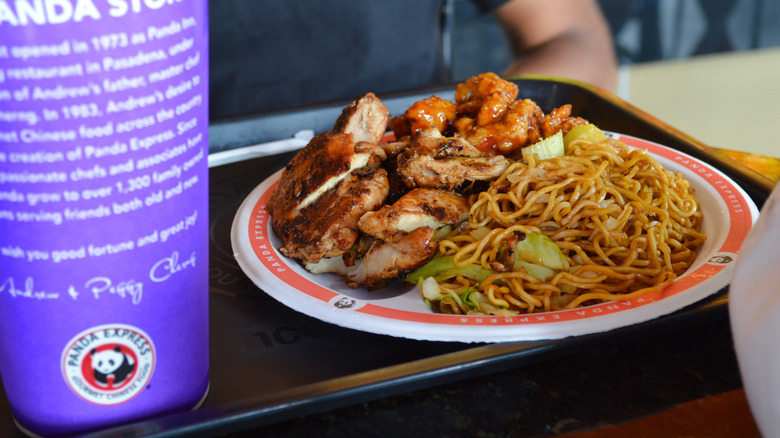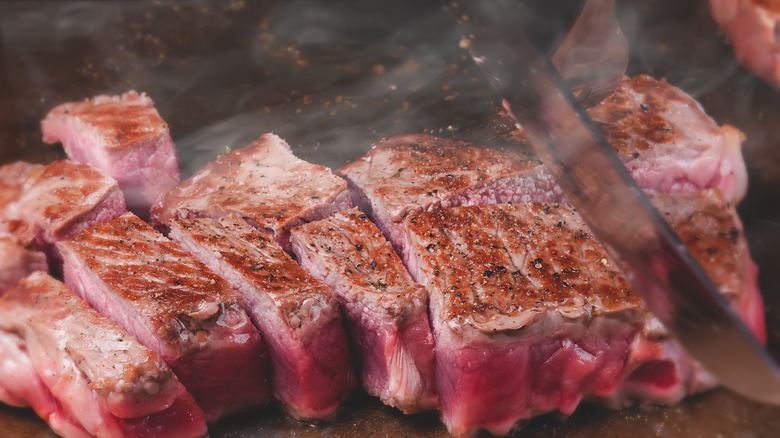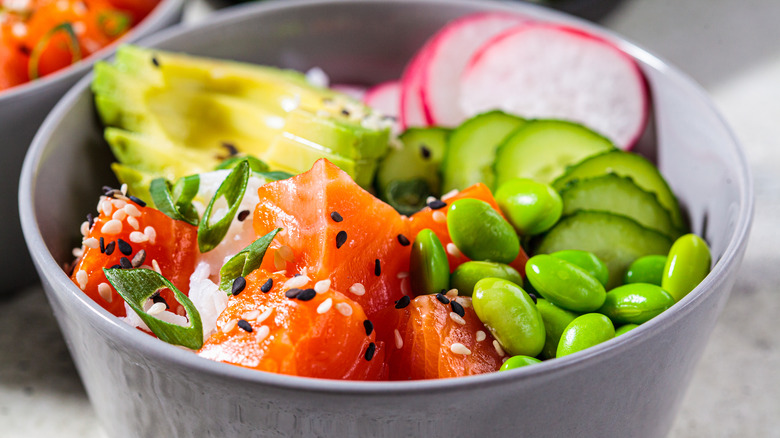The Japanese Kitchen Owned By Panda Express
What do you do if you own a chain of fast-casual Chinese restaurants (say, Panda Express) and anticipate that you may lose customers to newer Asian restaurants that serve food on the go (say, sushi)? You have a few options. One is the practical but boring option to stay in your lane and trust that your unique selling point will still bring in customers. Two is the chaotic-neutral option to literally become the competition.
The owners of Panda Express, Andrew and Peggy Cherng, chose option two. Fortune explains that in 1992 they had 20 years of experience serving Chinese food to American customers and were well-loved, particularly in California where they opened their first restaurant. They could have just cruised along. But they anticipated that they may lose customers to newer restaurants and started Hibachi-san, a fast-casual Japanese eatery focusing on sushi and teppanyaki. The pair told Fortune that it was a "defensive strategy to keep Japanese restaurants from selling against their Chinese food at Panda Express." A bold move with lots of potential.
Hibachi-san has not hit the heights of Panda Express
30 years on, it is unclear if this foray into Japanese fast-casual food really paid off or if perhaps the Cherngs overestimated the threats from other food providers. Consider the number of Hibachi-san locations. There are only 10 Hibachi-san locations in the United States, centered in malls or universities, compared to the 2,300 Panda Express locations nationally. Based on Yelp reviews and Google directory searches, the locations in Santa Rosa, CA; Chandler, AZ; and Washington, DC seem to have closed. It's clear that the Panda Restaurant Group is associated with Panda Express and by extension, American-Chinese food.
There's also parental favoritism. Decades after Hibachi-san opened, people still refer to it as the "lesser known sibling." The website for Hibachi-san only shows a list of locations with no menus or price list, their Facebook page has not been updated in years, and there are no eye-rolling puns like "we wok for you" which is in big, bold font on the Panda Express website.
Finally, the customer reviews are mixed, ranging from "The sashimi is not great," to "Just think of this place as a bit more expensive Panda Express." The latter sounds like a back-handed compliment but probably best encapsulates what the owners wanted for the brand.
Hibachi-san is still evolving
Still, we may be unfairly judging Hibachi-san. Maybe it is better to think of it as the experimental arm within the Panda Restaurant Group ecosystem. It may have started as a sushi and teppanyaki restaurant, but Corporate knows when to evolve. Rather than offer a stock-standard menu in every location, there are variations with a growing emphasis on poke bowls with a build-your-own option for customers who have grown up with Chipotle and Subway's style.
A phone call to the Hibachi-san location in Camp Pendleton, CA, for example, highlighted that they no longer had hibachi grills and only had sushi in the morning. What do they have all day, every day instead? Poke bowls where the options include sushi rice as the base, hot or cold protein like shrimp tempura or spicy yuzu salmon, and toppings like edamame or ginger.
This may not be what the Cherngs had in mind when they opened Hibachi-san, but it is clear they know how to move with the times. Also, what's more American than an American-Chinese brand opening a Japanese restaurant and then evolving into selling American-Hawaiian-Japanese food?


